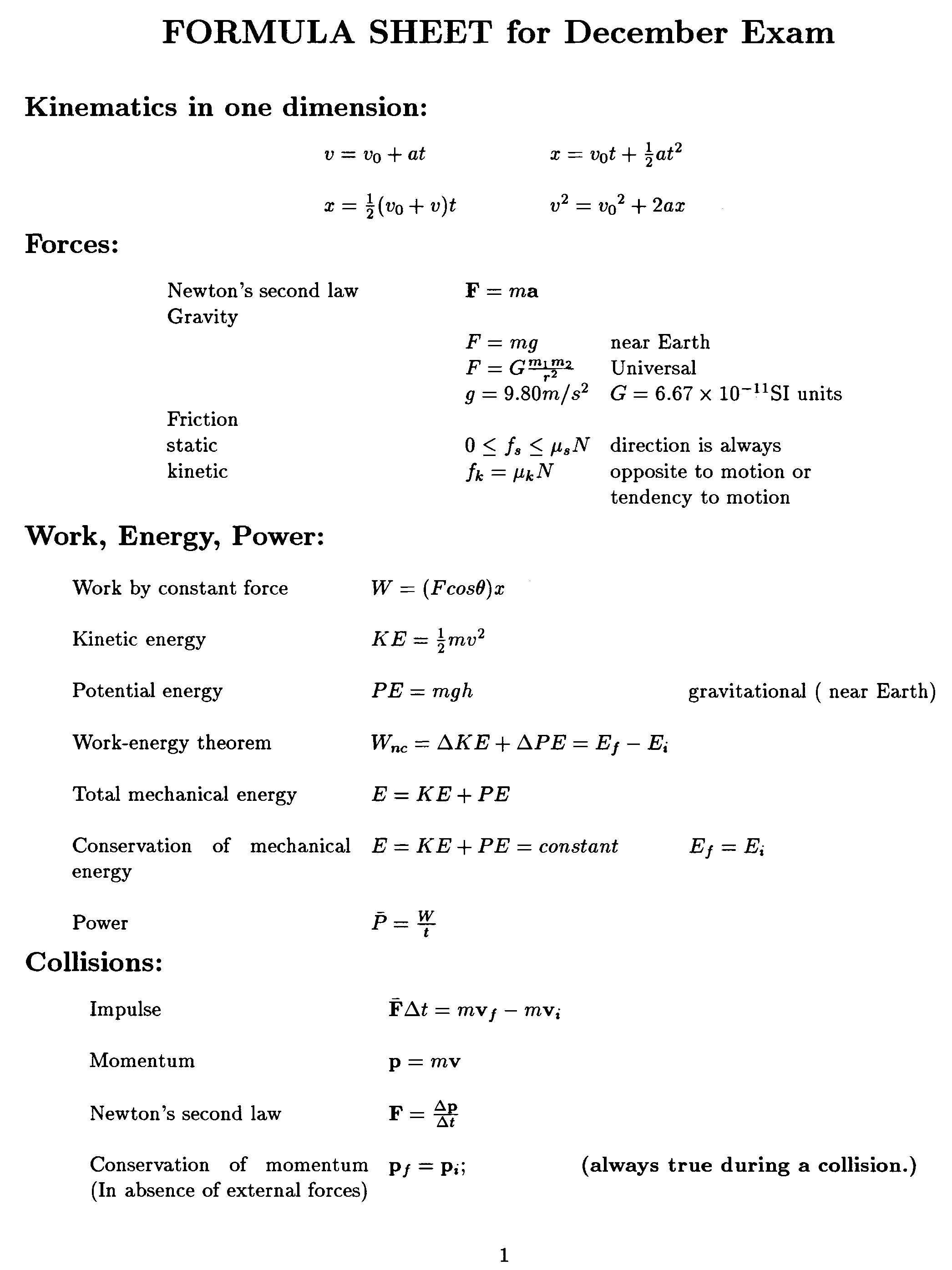Unique Advanced Placement Physics 1 Equations

This means that under a 10-atm increase in pressure the relative decrease in volume is approximately three times as large for acetone as it is for water.
Advanced placement physics 1 equations. The scoring guidelines typically show numerical results using the value g 98 m s2 but the use of. Practice questions in the fundamentals of physics while you review topics from classical dynamics to modern quantum mechanics with Alberts AP Physics 1 exam prep. Electricity and Magnetism Course Description or Terms Defined in the AP Physics 1.
Acknowledgments College Board would like to acknowledge the following committee members consultants and reviewers for their assistance with and. Taking the test is often the culmination of an AP Physics 1. However the proton has a mass of 167 10 27 kg 167 10 27 kg so its acceleration is a F m 96 10 13 N 167 10 27 kg 57 10 14 ms 2 a F m 96 10 13 N 167 10 27 kg 57 10 14 ms 2 or about ten thousand billion times the.
145 10 4 atm. Starting with the 2021 exam Units 810 will no longer be tested in AP Physics 1. For example the compressibility of water is 464 10 5 atm 464 10 5 atm and the compressibility of acetone is 145 10 4 atm.
The AP Physics 1 2 exams cover all of the topics in the previous AP Physics B C exams plus some additional ones as well. AP Physics 1 Exam Information. College successincluding the SAT and the Advanced Placement Program.
However team 2s table is lower than team 1s table. Algebra-Based Course and Exam Description. In 2019 only 352 of students who took the AP Physics 2 exam received a grade of 4 or 5.
AP PHYSICS 1 TABLE OF INFORMATION -2- CONSTANTS AND CONVERSION FACTORS Proton mass 167 10 k 27 g m p Electron charge magnitude e 160 10 C 19 Neutron mass 167 10 kg 27 m n Coulombs law constant k 14 90 10 Nm C pe 92 0 2 Electron mass 911 10 kg 31 m e Universal gravitational constant G 667 10 m k 11 3 2gs Speed of light c. Anyone can learn physics. The techniques taught here are useful in more advanced courses such as Physical Mechanics Electricity and Magnetism and Advanced Quantum Physics.













